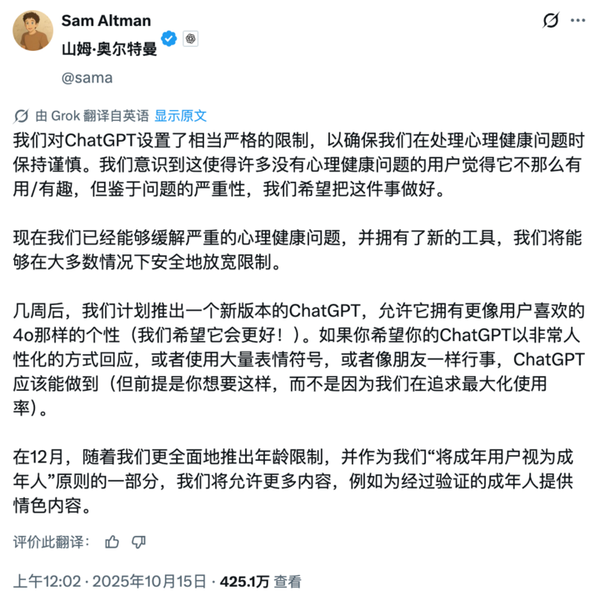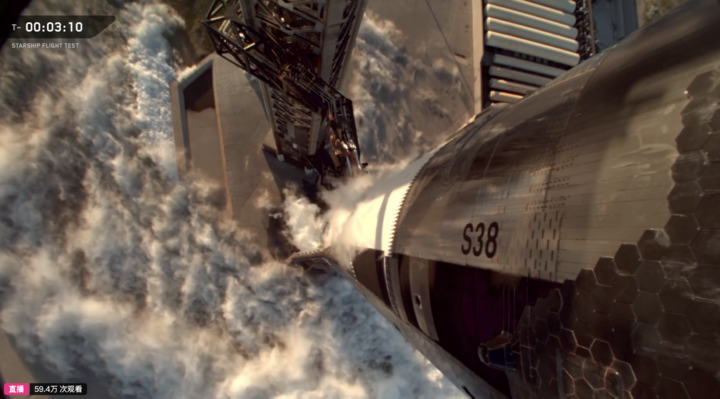A Complete Guide to Starship’s Eleventh Flight: Farewell to Gen-2, “Chopsticks Catch” Incoming
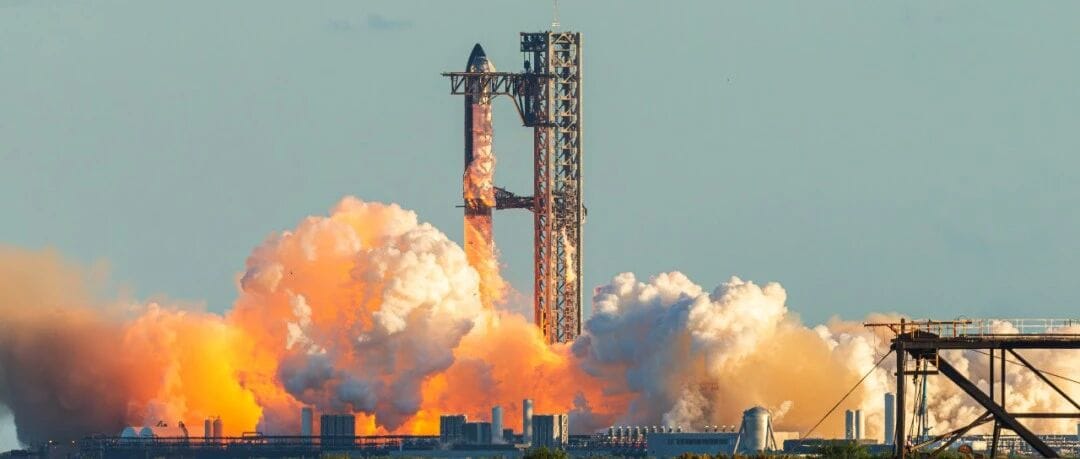
Ten Blasts to Hone One Arrow
---

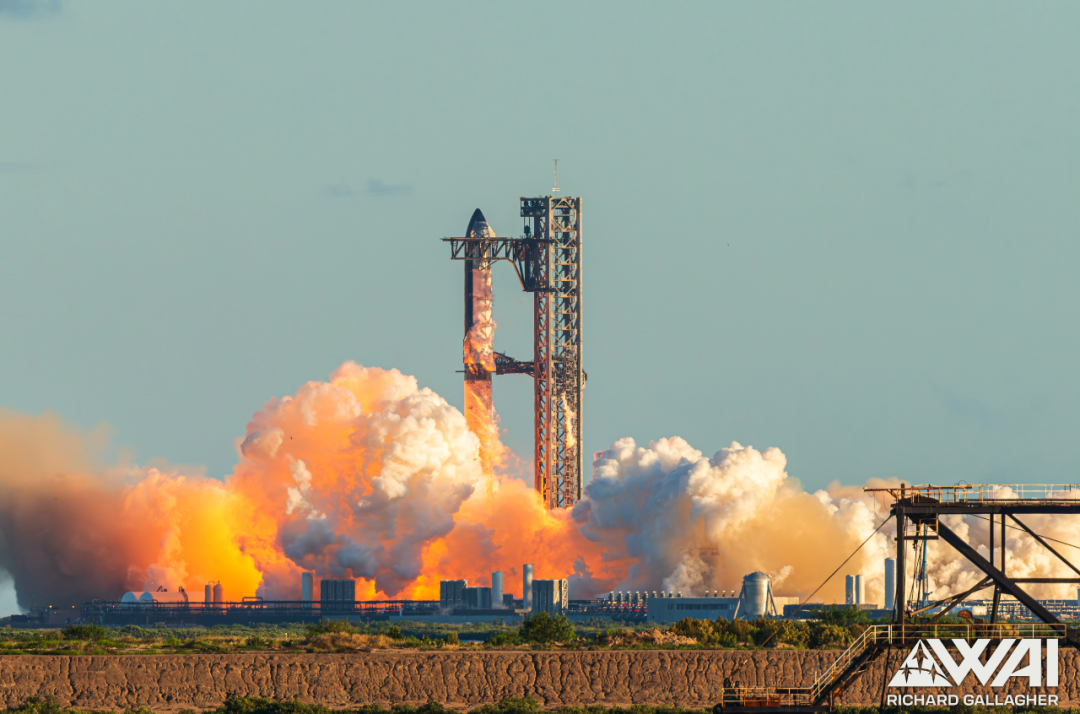
Starship “Flight 11” launch scene — Source: RICHARD GALLAGHER
---
Overview
On October 14 (Beijing time), SpaceX successfully conducted the eleventh integrated flight test of the Starship—nicknamed “Flight 11.”
Key milestones achieved:
- Super Heavy Booster completed all landing burn configuration & thrust tests before intentional splashdown in the Gulf of Mexico.
- Starship spacecraft executed payload deployment and return maneuvers, splashing down in the Indian Ocean.
---
Flight 11 Configuration and Goals
This mission featured:
- Spacecraft: S38
- Super Heavy booster: B15.2 (reused from Flight 8)
- The final test flight of the second-generation Starship.
Primary objectives:
- Collect landing burn configuration and thrust data for the upcoming third-generation Super Heavy.
- Stress-test the spacecraft’s heat shield tiles.
- Refine ignition, maneuvering, and navigation for return-to-launch-site capability.
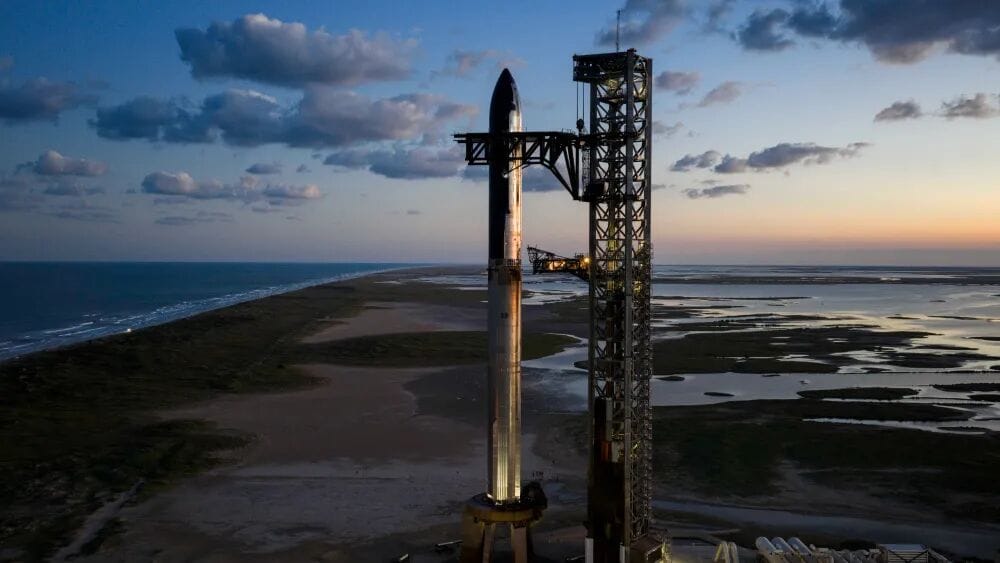
S38B15.2 Starship stack atop the launch tower — Source: SpaceX
---
1. Core Mission: Gen-3 Preparation & Spacecraft Return
Booster (B15.2) Configuration
- Reused 24 Raptor V2 engines (out of 33) to cut operational costs.
- Tested landing burn profiles across three phases:
- Initial burn: 13 engines
- Fine-path adjustment: 5-engine configuration (future Gen-3 standard for redundancy; Gen-2 uses 3 engines here)
- Final hover burn: 3 central engines, simulating “chopsticks” catch, then shutdown & splashdown with no recovery.
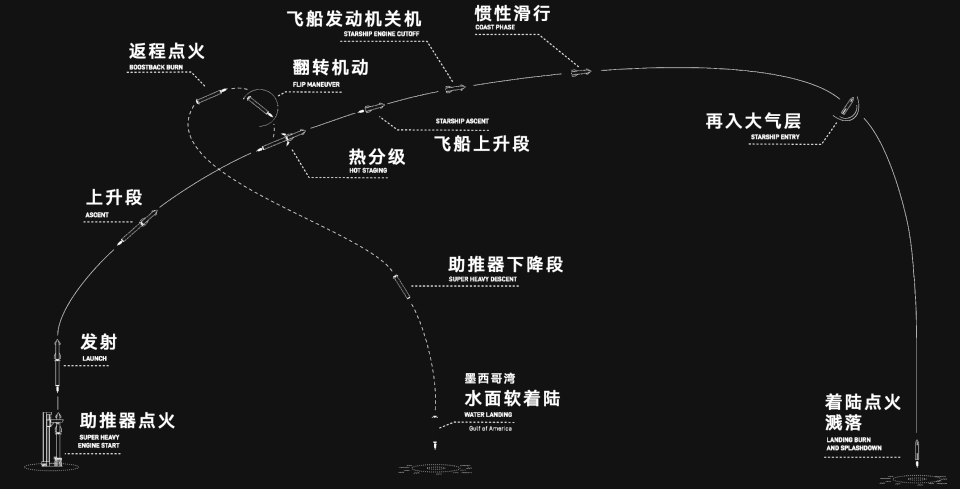
Main phases of Starship’s suborbital flight — Source: SpaceX
Spacecraft (S38) Validation Tasks
- Dynamic tilt maneuver testing for precise final re-entry orientation.
- Vacuum re-ignition reliability (single Raptor engine) — validated previously in Flight 10.
- Extreme heat shield limit test — certain tiles removed, no backup ablative layer.
- Payload deployment test — Starlink satellite simulator released on suborbital path (expected to fail after re-entry).
Bill Gerstenmaier noted the heat shield tiles had a “crispy film” gap filler, improving insulation while reducing installation time.
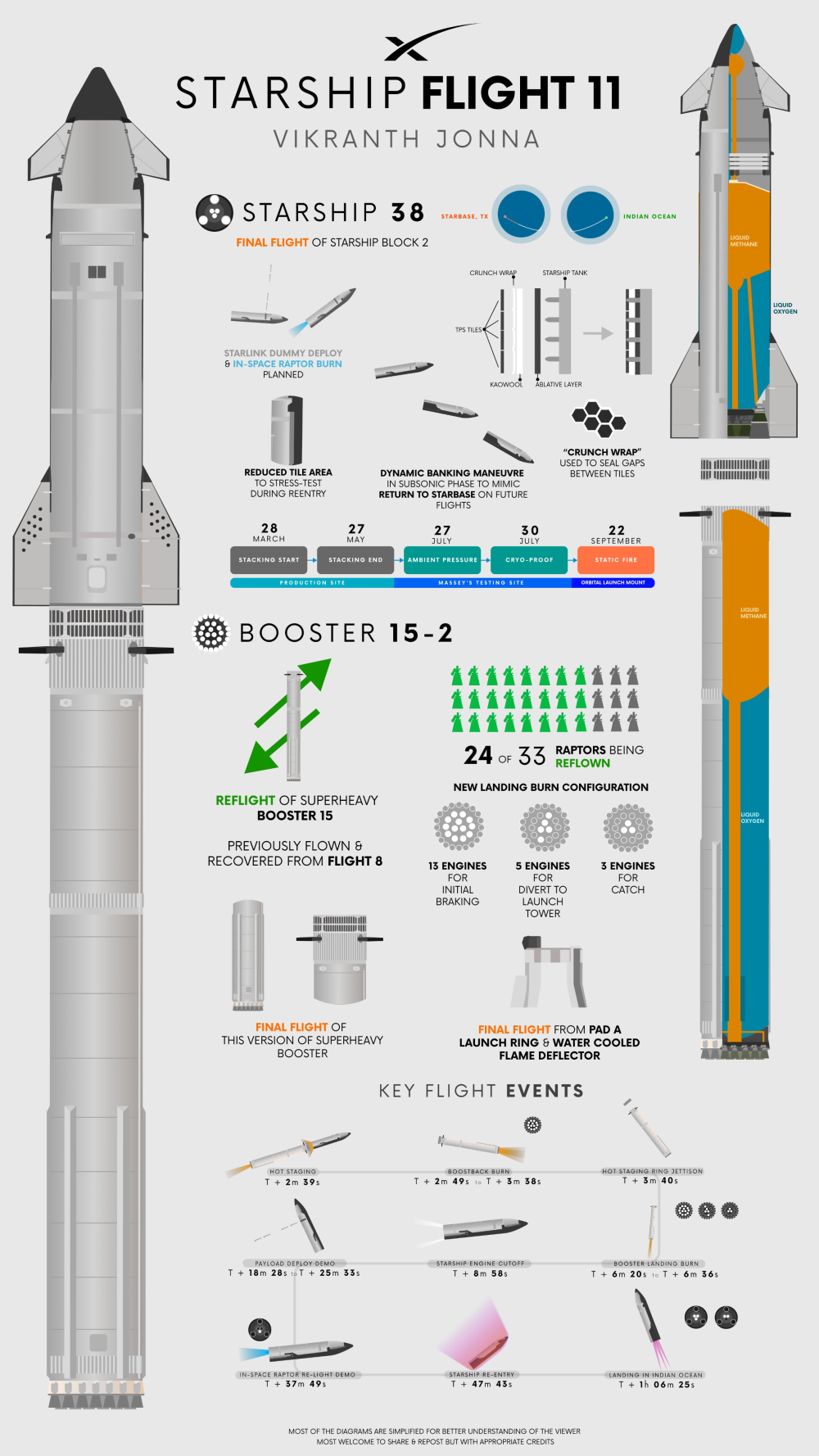
Flight 11 Starship stack details — Source: @vikranthjonna
---
2. Final Performance of Second-Generation Starship
Flight history:
- Flights 1–6: First-generation Starship
- Flights 7–11: Second-generation Starship
SpaceX announced Pad 1 (Starbase PAD A) second-gen configuration’s final flight before transitioning to Gen-3.
Performance highlights:
- Flights 8 & 9: Complete successes
- Flights 7 & 10: Partial successes
- Flight 11: Smooth execution — validated extreme heat protection, payload deployment, and vacuum ignition.
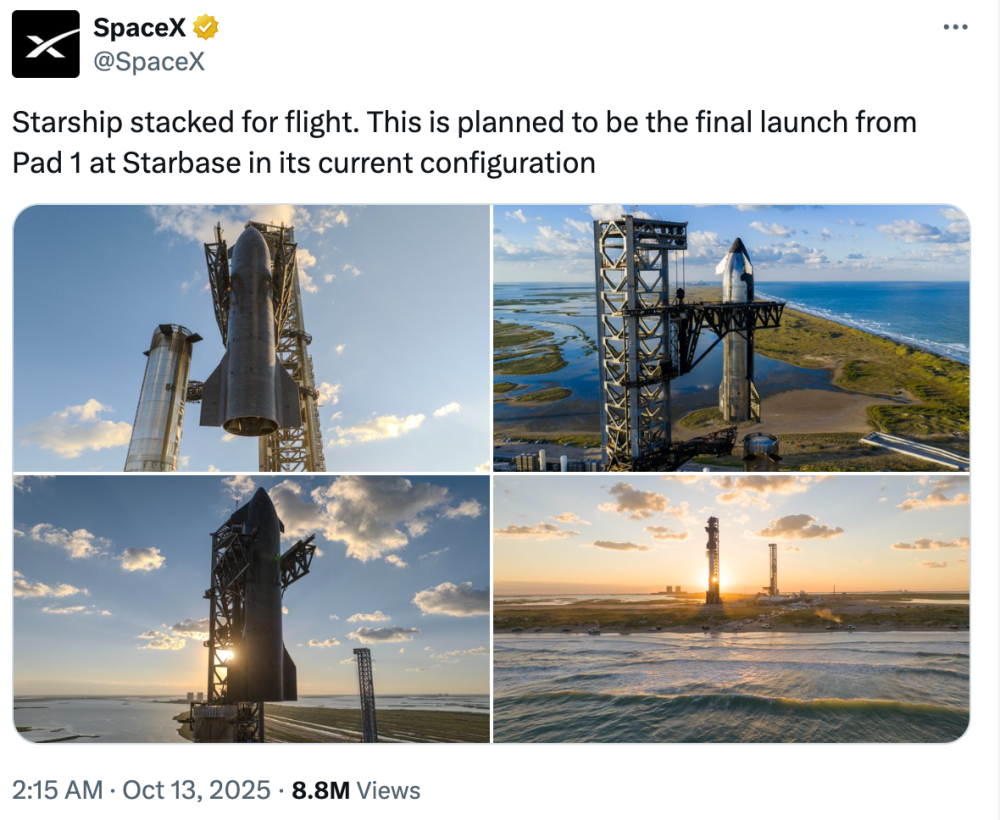
Infrastructure Changes Ahead
- Gen-3 Starship’s scale and design changes require Pad 1 modifications.
- Pad 2 (Starbase PAD B) and Launch Pad L39A (Kennedy Space Center) will support future tests.
- Expansion needed at Starfactory in Texas and Megabay in Florida for manufacturing and assembly.
Until Florida’s plant completes in late 2026, Starships will be built in Boca Chica, Texas, and barged to Florida.
---
3. Third-Generation Starship Stack
Elon Musk projects:
- Full reusability
- Deliver 100 tons to orbit
- Weekly launch rate achievable within 12 months of 2026 debut.
Upgrades vs. Gen-2:
- Height: >124 m
- Material: New stainless steel & improved welding
- Mass reduction: 10–15%
- Payload bay volume: +20%
- Engine: Raptor Gen-3 (+10–15% efficiency; thrust increase from 230t → 280t)
- Booster grid fins: Larger (by 50%), stronger, only 3 fins spaced 90° apart, positioned lower to reduce heat exposure.
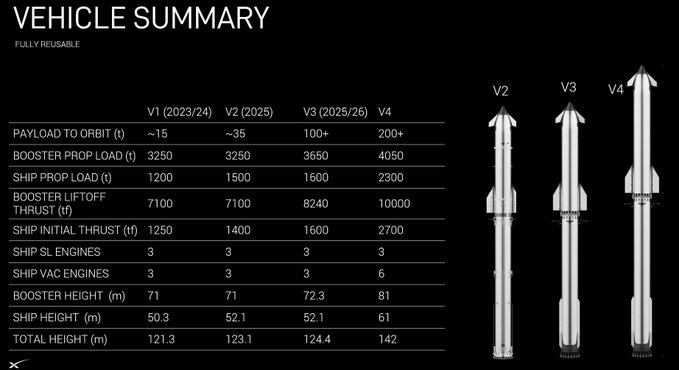
Specifications of Starship versions — Source: @elonmusk
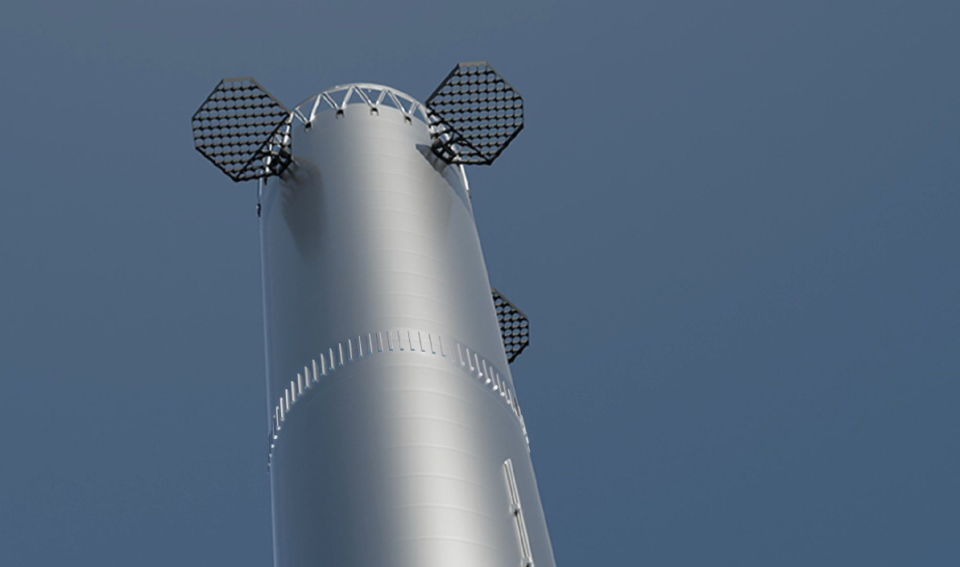
New larger grid fins — better attitude control & reuse rates
---
Recovery Plans:
- Future designs aim for full tower catch of both booster & ship, removing the need for costly barge recoveries.
Tentative timeline:
- Ground tests: Late 2025
- First suborbital flight: Mid-2026
- Orbital missions: Post initial success
- Cargo Moon mission: 2028
- Cargo Mars mission: 2030
- Projected cost: ~$100M per ton of payload

---
Recommended Reading: Starship Series
Flight 10 Guide

No chopstick catch, but notable spacecraft leap.
---
Nine Flights Summary
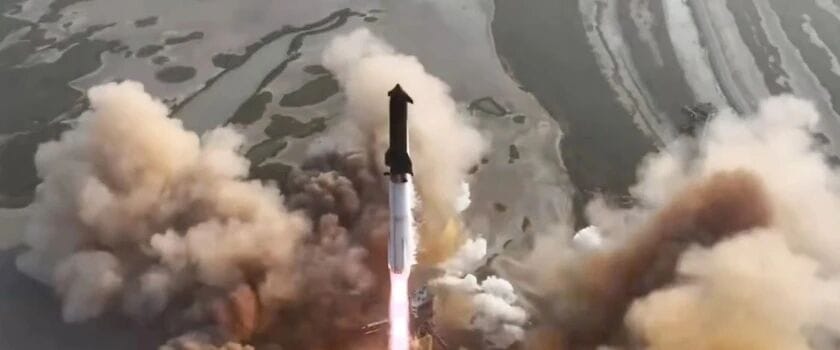
Reuse, recovery explosions, and failed spacecraft re-entry tasks.
---
Second-Gen New Starship Launch
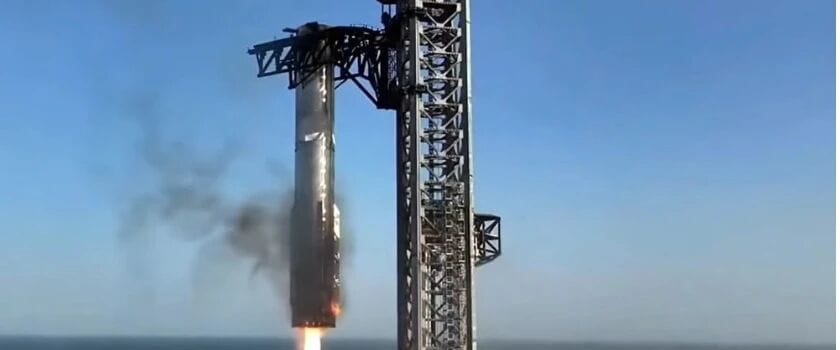
Chopsticks rocket lifting maturing; spacecraft explodes.
---
Read Original | Open in WeChat
---
Final Thoughts
These developments showcase SpaceX’s rapid iteration and the inherent risks of large-scale aerospace advancement.
Just as SpaceX leverages automation and design evolution, creators across tech domains are using AI-powered content platforms—like AiToEarn官网—to produce, publish, and monetize across multiple channels (Douyin, Kwai, WeChat, Bilibili, Rednote, Facebook, Instagram, LinkedIn, Threads, YouTube, Pinterest, X).
This convergence of high-speed iteration in aerospace and integrated AI distribution ecosystems signals a broader trend toward scaling innovation globally.


